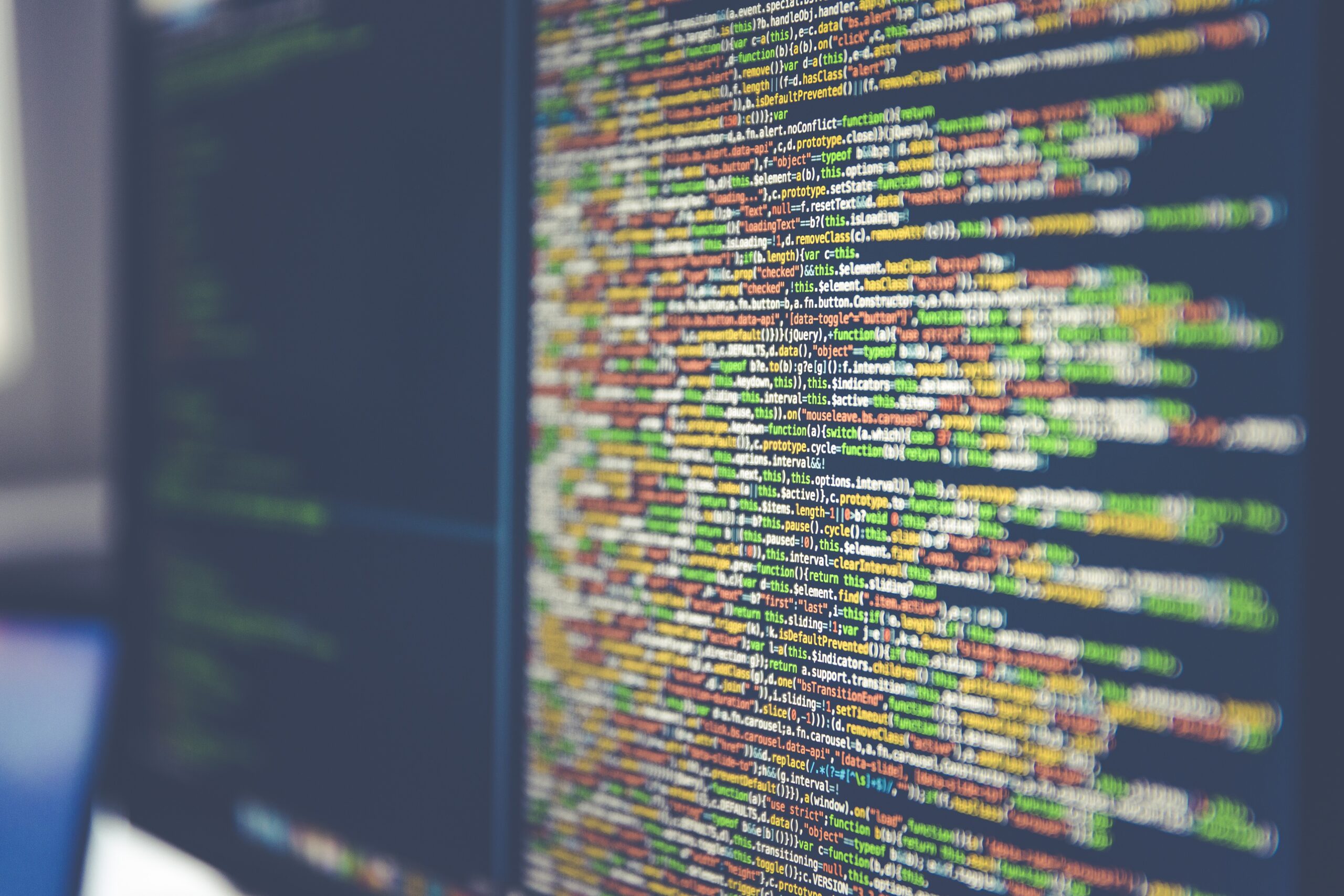
Imagine a world where technology has advanced to such an extent that artificial intelligence (AI) has become capable of replacing jobs traditionally held by humans. From manual labor to customer service, the potential for AI to dominate various industries is a thought-provoking topic of discussion. This article explores the fascinating possibilities of how AI could reshape the workforce, leaving us questioning the future of employment as we know it.
The Impact of AI on Jobs
Artificial Intelligence (AI) has been a hot topic of discussion in recent years, as its potential to transform industries and reshape the job market becomes increasingly apparent. From automation to data analysis, AI is revolutionizing the way tasks are performed and decisions are made. While AI brings a myriad of benefits, there are concerns about its impact on job stability and employment rates. In this article, we will explore the current and future job market trends, the types of jobs at risk, the industries most vulnerable to job replacement, the automation and job losses, the benefits of AI replacing jobs, the challenges and concerns, the future of work, the government and policy responses, and how individuals and organizations can prepare for an AI-driven future.
Current and future job market trends
The job market is in a constant state of evolution, influenced by technological advancements, economic factors, and societal changes. In recent years, AI has emerged as a game-changer, introducing significant disruptions to traditional employment patterns. One of the key trends in the job market is the increasing demand for AI-related skills. As companies embrace AI, they seek individuals with expertise in machine learning, data analysis, and programming. Moreover, the job market is witnessing a shift towards jobs that involve collaborating with AI systems, rather than solely relying on human input. This highlights the importance of acquiring skills that complement AI capabilities, such as critical thinking, creativity, and problem-solving.

The role of AI in job displacement
Job displacement refers to the phenomenon where AI systems and automation technologies replace human workers in performing certain tasks or job roles. While AI’s impact on job displacement varies across industries, it is evident that advancements in technology are gradually replacing certain job functions. AI’s ability to process large amounts of data, learn from patterns, and perform repetitive tasks with precision makes it an ideal candidate for automating jobs that involve routine and manual labor. However, it is important to note that AI is not set to completely replace the human workforce. Rather, it augments human capabilities, freeing up time for employees to focus on higher-value tasks and enhancing productivity.
Types of Jobs at Risk
-
Repetitive and manual labor:
- Jobs that involve repetitive tasks, such as assembly line work and routine manufacturing processes, are particularly at risk of being replaced by AI systems. Automation technologies can perform these tasks more efficiently, accurately, and without fatigue.
-
Administrative and clerical roles:
- Many administrative and clerical roles, such as data entry and document processing, may be susceptible to automation. AI-powered software can process information, extract relevant data, and generate reports at a much faster pace compared to humans.
-
Transportation and logistics:
- The transportation and logistics industry is also vulnerable to job displacement due to AI advancements. Self-driving vehicles and automated delivery systems have the potential to replace truck drivers, delivery personnel, and warehouse workers.
-
Customer service and call centers:
- AI chatbots and virtual assistants have already become common in customer service and call center roles. These AI systems can handle basic customer inquiries, provide support, and even perform tasks like scheduling appointments, reducing the need for human agents.
-
Data analysis and decision-making roles:
- With the rise of AI systems capable of analyzing vast amounts of data, roles that involve data analysis and decision-making may experience changes. AI algorithms can process data quicker, identify patterns, and provide insights that can inform business strategies.

Industries Most Vulnerable to Job Replacement
While the impact of AI on job displacement can be felt across various sectors, certain industries are more vulnerable to significant changes in employment patterns. These industries include:
-
Manufacturing and assembly lines:
- The manufacturing sector has been at the forefront of automation for decades. Assembly lines and factory processes have become increasingly automated, reducing the need for manual labor.
-
Retail and customer service:
- With the rapid growth of e-commerce, the retail industry has seen a shift towards online shopping and automation in order fulfillment. Self-checkout systems, AI-driven inventory management, and customer support chatbots have replaced some jobs in retail and customer service.
-
Transportation and delivery:
- Self-driving vehicles and drones are poised to disrupt the transportation and delivery industry. While human drivers and delivery personnel might still be required for some tasks, the advancement of autonomous technology may considerably reduce the need for a large workforce.
-
Banking and finance:
- AI algorithms are increasingly being utilized in the banking and finance sector for tasks such as fraud detection, risk assessment, and customer support. This can impact jobs related to data analysis, customer service, and even some entry-level banking roles.
-
Healthcare and diagnostics:
- AI has the potential to revolutionize healthcare by assisting in diagnostics, image interpretation, and treatment planning. While AI cannot replace the expertise of healthcare professionals, it can augment their capabilities and potentially impact certain roles, such as radiologists.
-
Legal and paralegal services:
- In the legal field, AI systems can be utilized for tasks like legal research, contract analysis, and due diligence. This may lead to a decrease in entry-level paralegal roles, as AI can perform these tasks more efficiently and accurately.
Automation and Job Losses
Automation and AI advancements have already started to reshape various industries, resulting in job losses in some areas. The following aspects highlight the impact of automation on employment:
The rise of robotic process automation
Robotic Process Automation (RPA) involves the use of software robots or “bots” to automate repetitive tasks traditionally performed by humans. RPA has gained traction across industries, especially in roles that involve data entry, data extraction, and data manipulation. By automating these processes, RPA reduces the need for human intervention, leading to job losses in certain areas.
Impact on blue-collar workforce
Blue-collar jobs, particularly those that involve manual labor and routine tasks, are more susceptible to automation. As AI and robotics continue to advance, machines are increasingly capable of performing physical tasks that were once exclusively done by humans. Factory workers, warehouse employees, and manual laborers may find their job security threatened as automation technologies gain prominence.
Technological advancements in factory automation
The manufacturing industry has witnessed significant advancements in factory automation. Cutting-edge technologies such as robotics, machine vision, and IoT (Internet of Things) have allowed factories to streamline production processes and reduce the need for human workers. While automation enhances efficiency and productivity, it also leads to job losses, particularly for low-skilled workers.
Despite the concerns surrounding automation and job losses, there are several benefits that arise from AI replacing jobs.

Benefits of AI Replacing Jobs
AI replacing jobs is not entirely negative, as it brings forth several advantages that contribute to improving business operations and overall productivity. The following benefits illustrate the positive aspects of AI replacing certain job functions:
Increased efficiency and productivity
AI systems are capable of processing information and performing tasks at a much faster rate than humans. By automating repetitive and time-consuming tasks, businesses can achieve higher levels of efficiency and productivity. This allows organizations to allocate resources more effectively and focus on tasks that require human ingenuity and creativity.
Cost reduction for businesses
AI implementation can lead to significant cost savings for businesses. By automating certain job roles, organizations can reduce labor costs associated with repetitive tasks. AI systems can perform these tasks with precision and without the need for breaks or benefits, resulting in financial savings for businesses.
Focus on higher-value tasks
With AI systems taking over routine and mundane tasks, human workers can shift their focus to more complex and intellectually stimulating activities. This not only enhances job satisfaction and engagement but also allows employees to utilize their unique skills and expertise in areas where human intuition and decision-making are vital.
Improved safety in hazardous industries
Certain industries, such as mining, oil and gas, and construction, pose significant risks to the health and safety of workers. AI and automation technologies can help reduce these risks by replacing humans in hazardous environments. Robots and AI systems can perform tasks in dangerous conditions, minimizing the potential for accidents and injuries.
While there are clear benefits to AI replacing jobs, there are also challenges and concerns that need to be addressed in order to mitigate any negative consequences.
Challenges and Concerns
As AI continues to advance and replace certain job functions, several challenges and concerns arise. These include:
Unemployment and income inequality
One of the primary concerns related to AI replacing jobs is the potential increase in unemployment rates. The displacement of human workers by AI systems could lead to job scarcity, particularly for individuals with low-skilled or repetitive tasks-oriented roles. This can contribute to income inequality and socio-economic disparities within communities.
Skill gaps and reskilling needs
With the rise of AI, the demand for certain skills will change, and individuals will need to adapt to new roles that complement AI capabilities. Reskilling and upskilling become crucial to ensure employability in an AI-driven future. However, there may be a significant gap in skill acquisition and training opportunities, which could limit the ability of individuals to transition into new jobs.
Ethical considerations and bias in AI
The development and deployment of AI systems inherently come with ethical considerations. Ensuring that AI is developed and utilized ethically is crucial to prevent discriminatory outcomes and biases in decision-making processes. There is a need for transparent and accountable AI algorithms to ensure the fair treatment of individuals and to avoid exacerbating existing societal inequalities.
Socioeconomic impact on communities
The automation of certain job functions can have a significant impact on local communities, particularly those that rely heavily on specific industries or job sectors. The concentration of job losses in certain regions can lead to economic decline, social upheaval, and loss of community identity. It is essential for policymakers and organizations to consider the broader societal impact of AI implementation and to develop strategies to support affected communities.
The Future of Work
The impact of AI on the job market is not all doom and gloom. While some job functions will be replaced, new opportunities and job roles will emerge. The future of work presents exciting possibilities, including:
Shift towards new job roles
As technology evolves, new job roles are expected to emerge that focus on collaborating with AI systems. Jobs that require critical thinking, problem-solving, and creativity will become increasingly valuable. These roles may involve managing and optimizing AI systems, interpreting and acting on AI-generated insights, and ensuring ethical and responsible use of AI.
Collaboration between humans and AI
The future of work will likely involve increased collaboration between humans and AI. AI systems can augment human capabilities and provide support, allowing individuals to excel in their roles. Human-machine collaboration can lead to more innovative solutions and the ability to tackle complex challenges that require a blend of human intuition and AI-driven analysis.
Creation of AI-related jobs
As AI continues to develop, there will be a need for professionals who specialize in areas such as AI research, algorithm development, and ethical AI implementation. The creation of AI-related jobs can offset some of the job losses resulting from automation, providing new opportunities for individuals with the necessary skills and expertise.
Importance of lifelong learning
In an AI-driven future, the ability to adapt and learn new skills will be vital. Lifelong learning will become crucial to remain relevant and employable as job roles continue to evolve. Individuals will need to continually update their skills, acquire new knowledge, and embrace emerging technologies to navigate the changing job landscape.
Government and Policy Responses
Adapting to the changes brought about by AI requires proactive measures from governments and policymakers. The following are some key responses that can be implemented:
Implementing job retraining programs
Governments can establish job retraining programs to equip individuals with the necessary skills to transition into new job roles. These programs should identify in-demand skills, provide accessible training opportunities, and offer support in job placement. Collaboration between governments, educational institutions, and businesses will be crucial in designing effective retraining initiatives.
Creating supportive policies for affected workers
Policymakers can introduce supportive policies to assist workers affected by job displacement. This may include expanding social safety nets, providing financial assistance during transition periods, and facilitating access to healthcare and educational resources. Policies that promote a smooth transition and address the needs of affected individuals can help mitigate the negative impacts of job displacement.
Addressing privacy and data security concerns
As AI becomes more prevalent, concerns regarding privacy and data security become increasingly important. Governments should implement robust regulations and standards to ensure the responsible use of AI and protect individuals’ data rights. Clear guidelines on data collection, usage, and consent can help build trust in AI systems and alleviate privacy concerns.
Preparing for an AI-Driven Future
Individuals and organizations alike need to adapt and prepare for an AI-driven future. The following strategies can help facilitate this transition:
Fostering AI education and research
Educational institutions should prioritize AI education and research to equip individuals with the necessary skills. Incorporating AI-related courses and programs into curricula can prepare students for the changing job market. Collaborations between academia and industry can facilitate practical learning experiences and knowledge exchange.
Promoting entrepreneurship and AI startups
Encouraging entrepreneurship and the establishment of AI startups can spur innovation and create new job opportunities. Governments and organizations can provide support through funding programs, mentoring initiatives, and access to resources. By promoting a culture of entrepreneurship, individuals can actively contribute to the development and utilization of AI.
Building an adaptable and resilient workforce
Building a workforce that is adaptable and resilient is crucial for navigating the complexities of an AI-driven future. Organizations should prioritize continuous learning and professional development opportunities for their employees. Encouraging a growth mindset, fostering creativity, and promoting diversity can help organizations embrace change and leverage AI to their advantage.
Conclusion
The impact of AI on jobs is undeniable. As AI systems continue to evolve and become more sophisticated, certain job roles will undoubtedly be replaced. However, this technological disruption also brings forth new opportunities and job roles that require unique human skills. Governments, organizations, and individuals all have a role to play in ensuring a smooth transition into an AI-driven future. By implementing supportive policies, fostering lifelong learning, and embracing collaboration between humans and AI, we can tap into the potential of AI while minimizing the negative consequences. It is through proactive responses and a collective effort that we can harness AI’s power to create a brighter future for both businesses and individuals.



